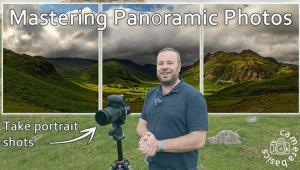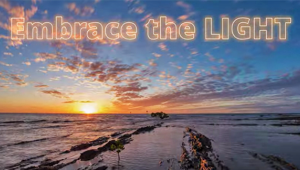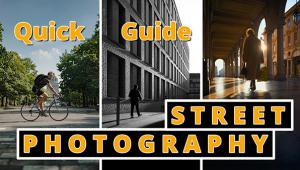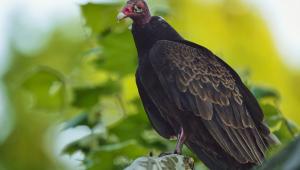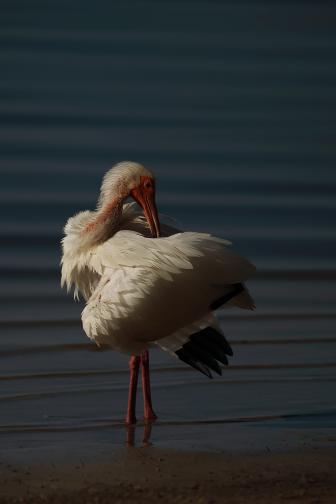7 Hot Summer Tips III
More seasonal photo fun
Back in 1998 (July issue), we brought you "7 Hot Summer Tips." In 2000 (June issue), we brought you seven more in "7 Hot Summer Tips II." Now, to keep the biennial string going in 2002, we bring you "7 Hot Summer Tips III."
Summer is a fine time for photography. Days are long and evenings are warm, providing many hours of good light and comfortable shooting. Of course, sometimes it's just too hot. On days when it's too hot to go out shooting, you can beat the summer heat and check out some great photography by going to the movies. Professional motion pictures are generally very well-shot, and you can learn a lot from watching, as well as have an enjoyable time. One purpose of photography is to communicate visually the idea that the artist wishes to convey to the viewer, and movies do this very well. And cinematographers have to deal with a few limitations the still photographer doesn't have to face. For one thing, the movie cameraperson can't switch to a vertical format. Movies are horizontal, and that's pretty much that. One thing to watch for when you go to the movies is how all those horizontal images (some 172,800 of them in a two-hour movie) are kept interesting, and how such things as character close-ups (equivalent to still portraits) and tall buildings are handled. Another limitation for cinematographers is that they can't bracket exposures (although the color-negative films they use do provide some exposure latitude).
 1. Play with the Kids
1. Play with the Kids
Kids are one of the most popular photo subjects, and now you can take photographic advantage of the fact that they're out of school. Take 'em to fun places and take lots of pictures, of both the place and of the kids enjoying it. Photograph individual kids, kids interacting with other kids, kids interacting with pets and kids interacting with parents. Use fill-flash to soften harsh-sun shadows.
With great weather and the kids out of school, summer offers some great photo opportunities.
Photo by Lynne Eodice
 2. Summer Weather
2. Summer Weather
While "hot and dry" might come to mind when many think of summer, the sunny season has its weather phenomena, too. Thunderstorms, billowy cumulus, rising heat waves that distort distant scenes and create mirages—even the dry desert Southwest has summer weather. So keep an eye on the weather during your summer photo outings, whether at home or on the road. Regularly check the Weather Channel or the local newspaper for current and impending weather. (Naturally, you'll want to photograph thunderstorms from a safe site, such as inside a building—tripods make dandy lightning rods.) You can emphasize shimmering heat waves by using a long lens to zero in on a distant area, with the resulting "compressed" perspective.
Summer storms provide lots of great photo-subject matter. Keep an eye on the sky, and check local weather forecasts for upcoming photo possibilities.
Photo by Mike Stensvold
 3. Watch the Birdies
3. Watch the Birdies
In most areas, birds are great photo subjects year-round. But spring and summer are breeding season, when many birds are at their most colorful and showiest. Good places to find birds to photograph include your back yard, city parks, lakes, hiking and wildlife areas, and even the zoo. Long, fast lenses are the pro bird photographer's tools of choice, but you can get great shots with more-affordable optics and faster films. This shot of a Great Blue Heron was made hand-held with a $600 200-400mm zoom lens at around 300mm.
For most birds, breeding season runs from spring through summer. And breeding season is when most birds are at their photogenic best, so it's a great time to photograph them. Check out those summer birds.
Photo by Mike Stensvold
 4. Macro Me
4. Macro Me
You can shoot close-ups year-round, of course; but summer offers warmer mornings and evenings, when the natural lighting is most attractive. You don't need specific close-up gear—these images were shot with "macro" telephoto zoom lenses that only focus down to around 1/4 life size. Some ideas: At the beach (always a great summer photo destination!), move close to sea foam in bright sunlight, and focus in on the sparkly bubbles. Then throw the bubbles out of focus for a different effect. (But remember the ocean—more than one photographer has been soaked when a wave snuck up on him or her as he or she concentrated on shooting.) Look for dew-moistened spider webs in early morning, and move around to find the best background. Or zero in on details of large subjects.
You don't need a special macro lens to explore familiar subjects up close. Just set your lens to its minimum focusing distance and move in on your subject until it comes into focus in the finder. Depth of field is quite limited at close range—try different points of focus.
Photos by Mike Stensvold
 5. Take a Drive
5. Take a Drive
Summer is a great time to take a scenic drive—that's why so many folks seem to do just that. Watch out for all those other vehicles, but keep an eye peeled for great roadside photo ops, too. It's a good idea to have someone else do the driving while you check out the photographic possibilities. While you can occasionally get some good shots from a moving car, it's generally best to park safely off the roadway before starting to shoot—you can compose more carefully, and investigate the locale's full potential.
You can finds lots of nice photo subjects while out on a summer drive. Just keep an eye out for them (best done, of course, as a passenger). When you see something good, find a safe place to park, and explore the photographic possibilities that await you.
Photo by Lynne Eodice
 6. Go Fly a Kite
6. Go Fly a Kite
Spring isn't the only time for kite-flying (and the photo ops it presents). You'll see kites flying all summer. They're lots of fun, and make great photo subjects. Get "establishing" shots of the kite, flier and environment; and get lots of shots of the kites in flight. Backlighting takes advantage of a kite's translucent construction. If the background shows, try some shots at slow shutter speeds to emphasize the kite's speed; when shooting against plain blue sky, use the fastest shutter speed possible for the sharpest images.
All you need for kite-flying is a little wind, a kite, and someone to fly it. The warm days of summer frequently provide all three. Get overviews, and experiment with shutter speeds—when some background shows in the shot, slow-shutter panning can emphasize the kite's speed.
Photo by Mike Stensvold
 7. Show Your Colors
7. Show Your Colors
For those long summer days when you can't seem to think of anything to shoot, a theme can come to the rescue. And a good one is color. You can concentrate on a single rich color, look for complementary color pairs, or even try to get all the primary colors into a single shot. You can make a color the main subject in a photo, or use it as a bright accent in a neutral-toned image.
Looking for subject matter? Think primary colors—red, green, blue, yellow. Photos emphasizing a bright color, or featuring a touch or bright color, or playing contrasting colors against one another all can be very effective, singly or displayed together.
Photo by Jim Zuckerman

